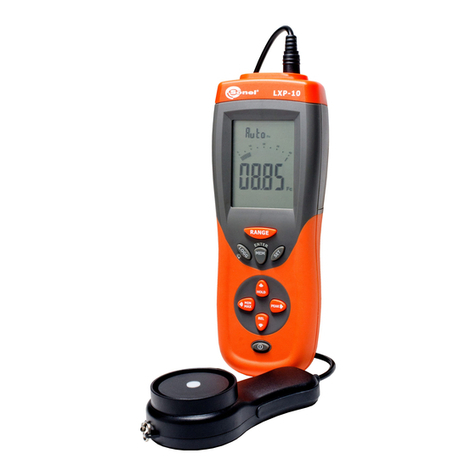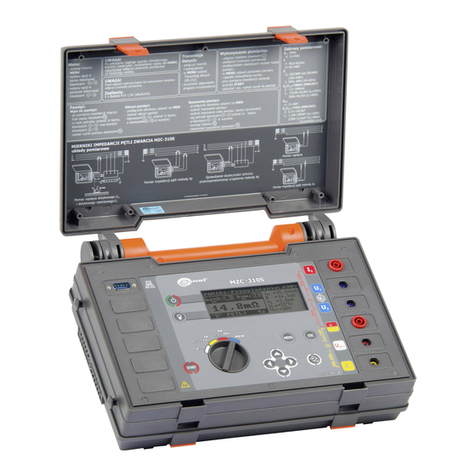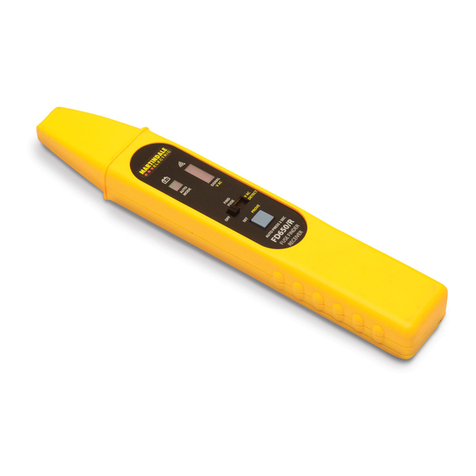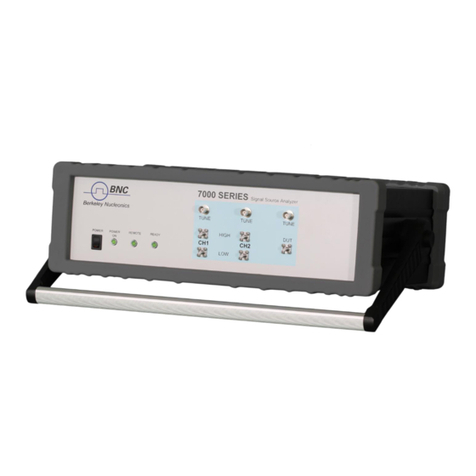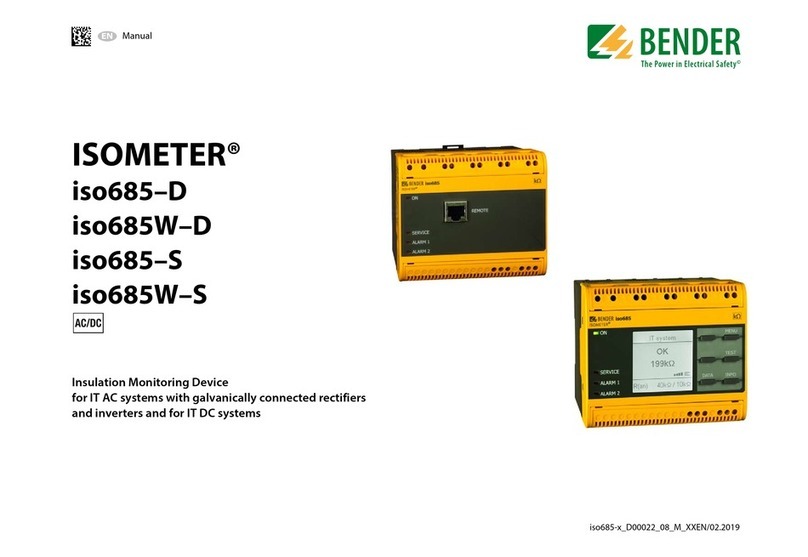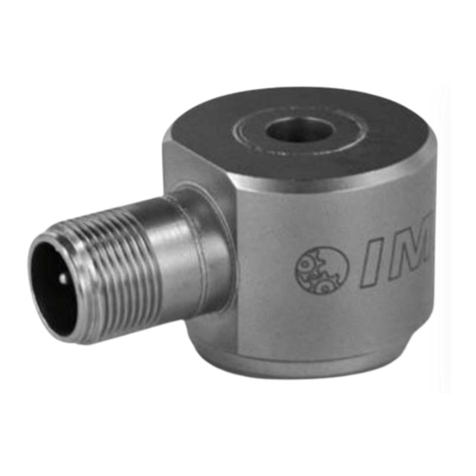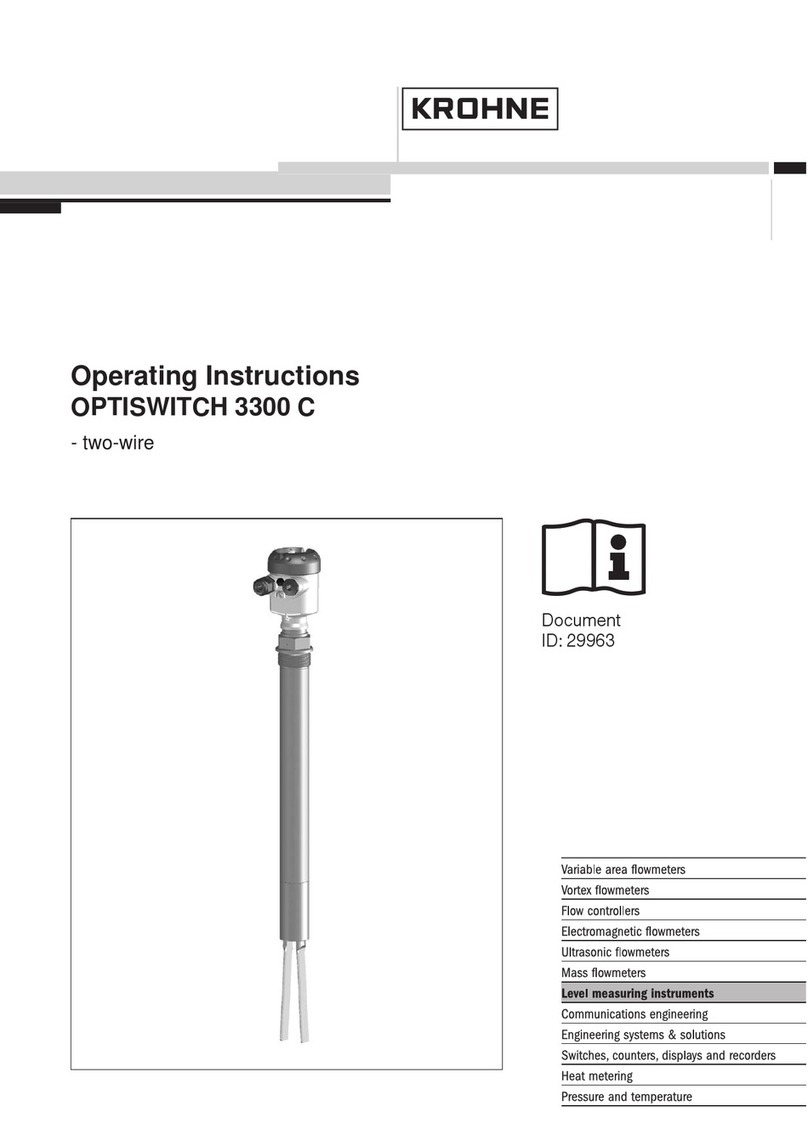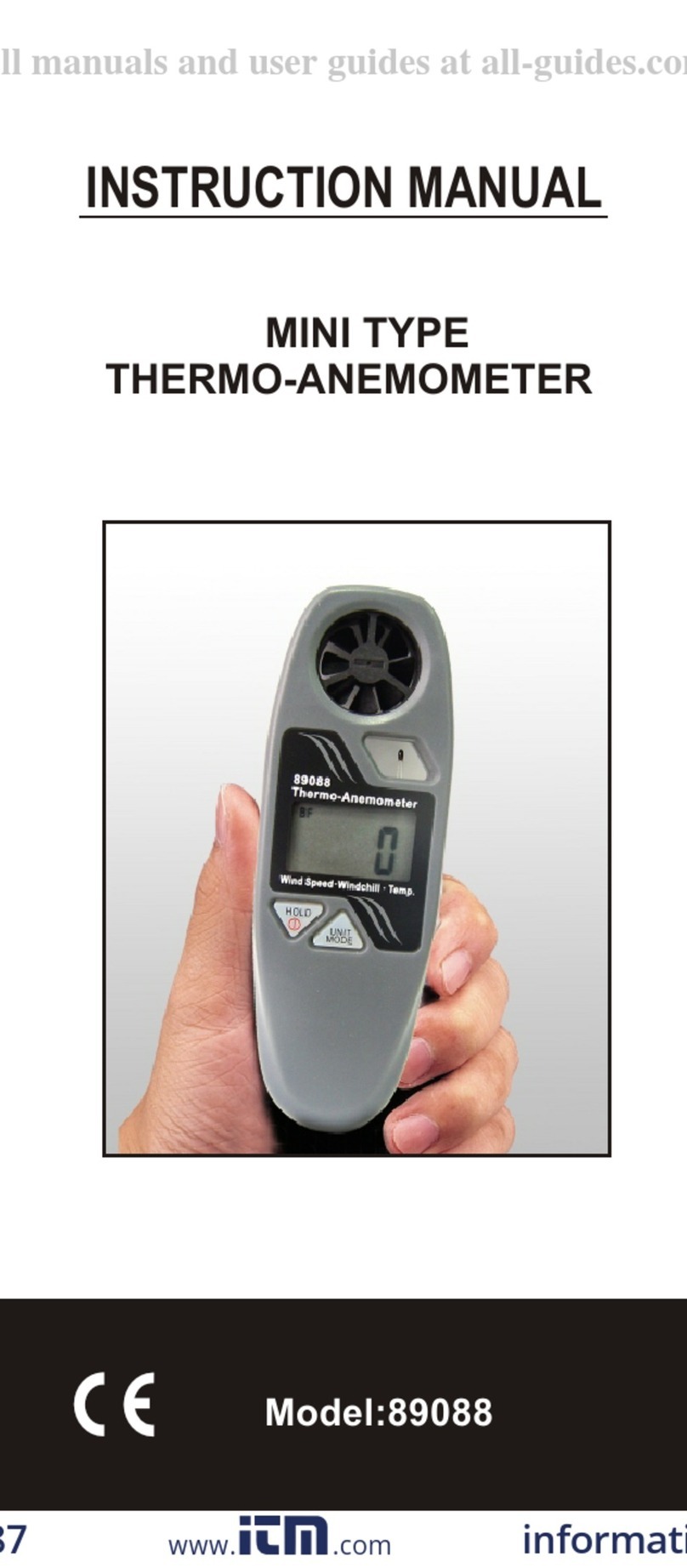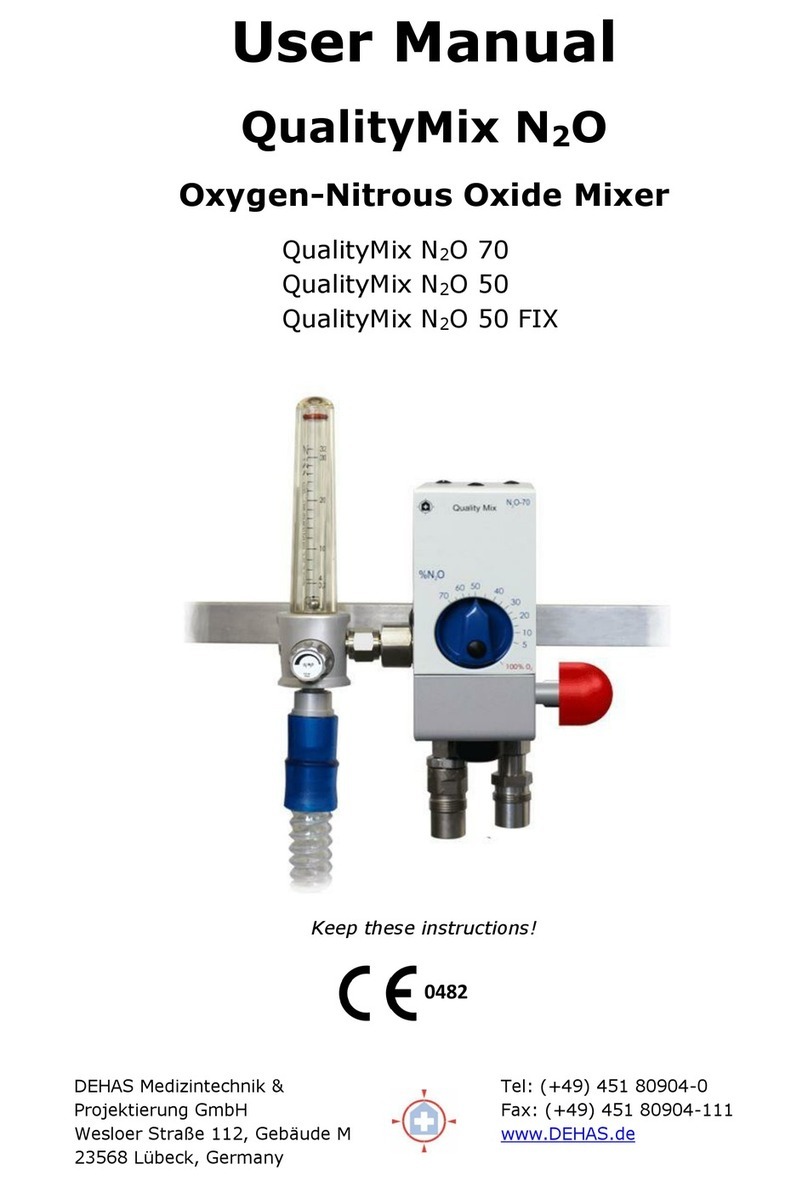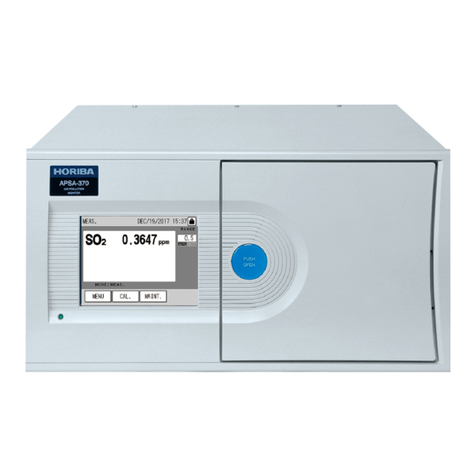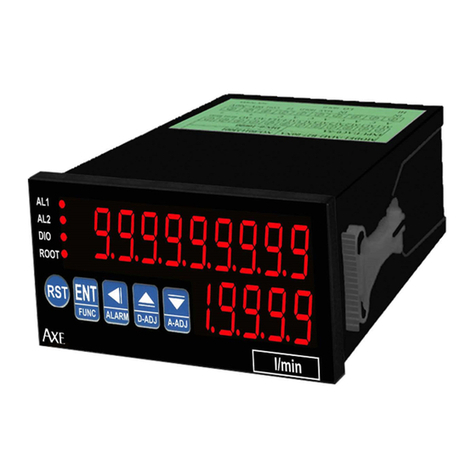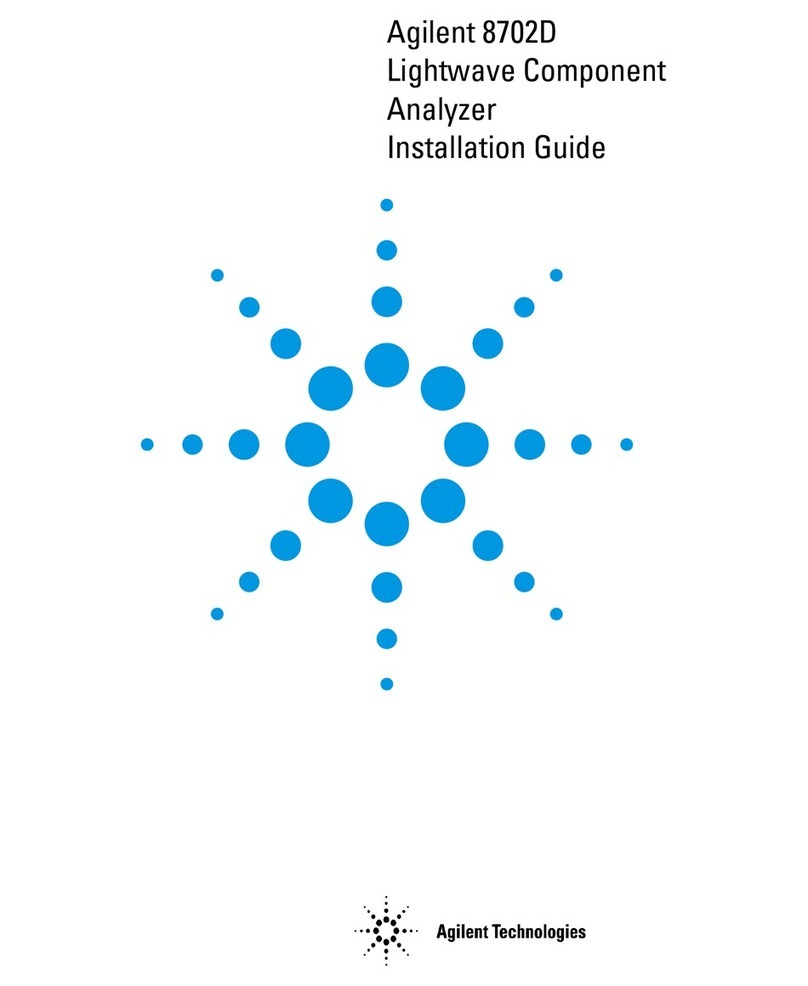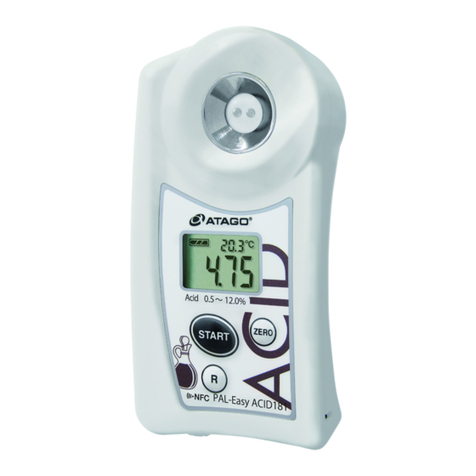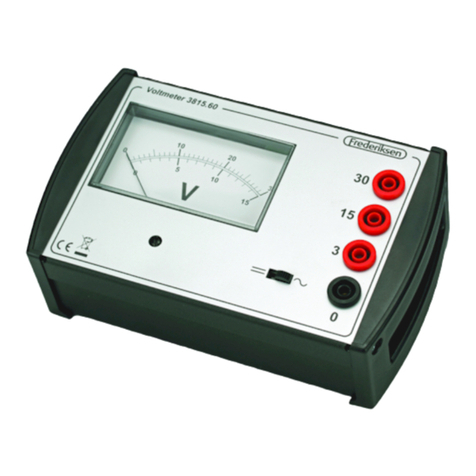Sonel MMR-650 User manual



LOW RESISTANCE METER
MMR-650
USER MANUAL
SONEL S.A.
Wokulskiego 11 St.
58-100 Świdnica, Poland
Version 1.03 08.01.2018

MMR-650 – USER MANUAL
2
Thank you for purchasing our low-resistance meter. MMR-650 is a modern, high-quality measuring
device, which is easy and safe to use. Please acquaint yourself with this manual in order to avoid
measuring errors and prevent possible problems in operation of the meter.

MMR-650 – USER MANUAL 3
CONTENTS
1
Safety ................................................................................................................ 5
2
General Settings - menu ................................................................................. 6
2.1
Meter Settings ...........................................................................................................6
2.1.1
Energy saving ................................................................................................................... 6
2.1.2
Sound settings .................................................................................................................. 7
2.1.3
PIN code settings.............................................................................................................. 8
2.1.4
Display brightness settings................................................................................................ 8
2.1.5
Wi-Fi configuration ............................................................................................................ 9
2.1.6
Printer Settings ............................................................................................................... 11
2.2
Memory settings......................................................................................................11
2.2.1
Memory management ..................................................................................................... 12
2.2.2
Object types database..................................................................................................... 12
2.2.3
Object names database .................................................................................................. 13
2.2.4
Resistance limits database.............................................................................................. 15
2.2.5
Temperature limits database........................................................................................... 17
2.2.6
Material database............................................................................................................ 18
2.3
Software update ......................................................................................................19
2.4
Service ....................................................................................................................20
2.5
User interface settings.............................................................................................20
2.5.1
Language selection......................................................................................................... 21
2.5.2
Selecting temperature unit .............................................................................................. 21
2.5.3
Selecting the startup screen............................................................................................ 22
2.5.4
Changing the date and time ............................................................................................ 22
2.6
Information about the Meter ....................................................................................23
2.7
Factory (default) settings.........................................................................................23
3
Measurements................................................................................................ 25
3.1
Testing the resistance objects.................................................................................25
3.2
Testing the inductive objects...................................................................................29
3.3
Measurement with automatic method selection ......................................................34
3.4
Logger.....................................................................................................................34
3.5
Core demagnetization .............................................................................................37
3.6
Special Features .....................................................................................................38
3.6.1
Temperature Measurement............................................................................................. 38
3.6.2
Windings temperature measurement............................................................................... 38
4
Memory ........................................................................................................... 43
4.1
Memory management (clients, objects, measuring points and logs).......................43
4.1.1
Entering the clients.......................................................................................................... 43
4.1.2
Entering objects, subobjects, measurement points and logs............................................ 44
4.1.2.1
Entering objects and subobjects................................................................................ 44
4.1.2.2
Entering measurement points and logs ..................................................................... 47
4.2
Storing the measurement results in the memory.....................................................49
4.2.1
Entering the results of measurements with previously organized memory ....................... 49
4.2.2
Entering the results of measurements without previously organized memory .................. 50
4.3
Viewing memory data..............................................................................................53
4.4
"Search" in the memory...........................................................................................55
4.5
Copying customer data from the memory to USB stick and vice versa...................57
4.6
Deleting memory data .............................................................................................58

MMR-650 – USER MANUAL
4
5
Report printing ............................................................................................... 59
6
Power supply.................................................................................................. 60
6.1
Monitoring the power supply voltage.......................................................................60
6.2
Replacing the battery pack......................................................................................60
6.3
General rules for using Li-Ion rechargeable batteries .............................................61
7
Cleaning and maintenance ........................................................................... 62
8
Storage............................................................................................................ 62
9
Dismantling and Disposal............................................................................. 62
10
Annexes .......................................................................................................... 63
10.1
Technical specifications ..........................................................................................63
10.2
Standard equipment................................................................................................64
10.3
Optional accessories...............................................................................................65
10.4
Manufacturer ...........................................................................................................66

MMR-650 – USER MANUAL 5
1 Safety
MMR-650 is a meter designed for measuring resistance of various types of connections (welded,
soldered, butt) in electrical installations as well as in inductive devices (transformers, motors) and it is
used to obtain results that determine safety condition of electrical installations. Therefore, in order to
provide conditions for correct operation and accuracy of obtained results, the following recommenda-
tions must be observed:
•Before you proceed to operate the meter, acquaint yourself thoroughly with the present manual and
observe the safety regulations and specifications provided by the producer.
•MMR-650 meter is designed to measure low-resistance values. Any application that differs from
those specified in the present manual may result in a damage to the device and constitute a source
of danger for the user.
•In case of measurements on systems, components and devices that may be under dangerous volt-
age, MMR-650 may be used only by qualified persons who are authorized to work on electric instal-
lations. Unauthorized use of the meter may result in its damage and may be a source of serious
hazard to the user.
•Using this manual does not exclude the need to comply with occupational health and safety regula-
tions and with other relevant fire regulations required during the performance of a particular type of
work. Before starting the work with the device in special environments, e.g. potentially fire-risk/ex-
plosive environment, it is necessary to consult it with the person responsible for health and safety.
•It is unacceptable to operate the device when:
⇒a damaged meter which is completely or partially out of order,
⇒a meter with damaged insulation,
⇒a meter stored for an excessive period of time in disadvantageous conditions (e.g. excessive
humidity). If the meter has been transferred from a cool to a warm environment with a
high level of relative humidity, do not start measurements until the meter is warmed up
to the ambient temperature (approximately 30 minutes).
•Before measurement make sure that test leads are connected to appropriate measuring terminals.
•Do not operate a meter with an open or incorrectly closed battery compartment and do not power it
from other sources than those specified in this manual.
•The inputs of the meter are protected electronically against overload e.g. due to having been con-
nected to a live circuit:
- for all combinations of inputs - up to 600V for 10 seconds.
•Repairs may be performed only by an authorised service point.
•The device meets the requirements of EN 61010-1, EN 61010-2-030 and EN 61010-031.
Note:
The manufacturer reserves the right to introduce changes in appearance, equipment and
technical data of the meter.
Note:
An attempt to install drivers in 64-bit Windows 8 and Windows 10, may result in display-
ing "Installation failed" message.
Cause: Windows 8 and Windows 10 by default block drivers without a digital signature.
Solution: Disable the driver signature enforcement in Windows.

MMR-650 – USER MANUAL
6
2 General Settings - menu
When the meter is turned on, it displays the main menu.
2.1 Meter Settings
In the main menu, click icon .
Click Meter settings button.
2.1.1 Energy saving
In order to save its rechargeable battery, the meter automatically shuts off or blanks the screen after
an adjustable inactivity period.
Click Energy saving button
WiFi signal strength Power supply
from mains
Battery charge
level, x – indicates
empty battery or no
battery in the com-
partment.
Indication of overheating of the
power supply adapter, battery
or measuring current controller
and no battery indication.
Full memory indicator.

MMR-650 – USER MANUAL 7
Set the inactivity time for
blanking the screen and turn-
ing off the meter.
2.1.2 Sound settings
Click Sound settings button.
Click the box to turn on ( )
or off the sound signals.

MMR-650 – USER MANUAL
8
2.1.3 PIN code settings
The PIN code is used for network connection with the meter.
Click PIN code settings but-
ton
Use "+" and "-" buttons to set
the code and confirm it by
pressing OK.
The PIN code is used for communication with PC. The factory code is 123.
2.1.4 Display brightness settings
Click Display brightness
button.

MMR-650 – USER MANUAL 9
Use "+" and "-" buttons to set
the desired brightness and
confirm it by pressing OK.
2.1.5 Wi-Fi configuration
Click WiFi configuration but-
ton.
To see local active WiFi net-
works, click Search network
button.
The meter detected networks
secured by password. Click
the name of the network to en-
ter the password.

MMR-650 – USER MANUAL
10
Enter the password and con-
firm it by pressing .
The meter connects to the net-
work, which is automatically
included in the list of trusted
networks.
You may use off button to turn
off WiFi.
After clicking Prefered net-
works button, the meter will
display networks saved in its
memory.
You may delete the network
by pressing button.

MMR-650 – USER MANUAL 11
2.1.6 Printer Settings
The meter is compatible with Sato CG2 printer.
Click Printer settings button.
By clicking individual fields,
you may change the data of
person/company performing
the measurements, which will
be printed.
2.2 Memory settings
In the main menu, click button.
Note: By pressing button, you may enter settings or enter the higher level in the settings.
Click Memory settings but-
ton.

MMR-650 – USER MANUAL
12
2.2.1 Memory management
Click Memory management
button.
This option allows you to read
the % of the used memory
and to clear it: after pressing
Delete memory all clients are
deleted with their objects and
measurement results. Use
button located at the cli-
ent to delete individual client.
2.2.2 Object types database
This is a list of types of tested resistive and inductive objects.
Click Object types database
button.

MMR-650 – USER MANUAL 13
The meter has 4 default types
saved in its memory. Use
button to add a new type of
the tested object.
Enter a new type of the object
being tested.
Added types may be deleted
by pressing .
2.2.3 Object names database
It is a list of names of tested objects or measurement points.
Click Object names data-
base button.

MMR-650 – USER MANUAL
14
The meter has 4 default
names saved in its memory.
Use button to add a new
name.
Enter the name of the object.
Added names may be deleted
by pressing .

MMR-650 – USER MANUAL 15
2.2.4 Resistance limits database
The specified limits may be used to automatically assess the validity of the results of resistance
measurements.
Click Resistance limits data-
base button.
Click button, to add a new
limit.
Click Limit’s name box.

MMR-650 – USER MANUAL
16
Enter the name of the limit.
Use button to go to the
lower limit setting.
Enter the lower limit. Use
button to go to the upper limit
setting. You can set only one
of the limits.
Use button to save the
limit in the memory. By press-
ing you may exit without
saving.
Use button to cancel the
limit.

MMR-650 – USER MANUAL 17
2.2.5 Temperature limits database
The specified limits may be used to automatically assess the validity of the results of temperature
measurements.
Click Temperature limits da-
tabase button.
Click button, to add a new
limit.
Enter and save the limits using
the same method as de-
scribed in section 2.3.4.
Use button to cancel the
limit.

MMR-650 – USER MANUAL
18
2.2.6 Material database
The database contains the temperature coefficients of resistance for different materials, used in
measurements with temperature compensation.
Click Material database but-
ton.
The meter has 5 defaults ma-
terials saved in the memory,
together with the thermal re-
sistance coefficients of: cop-
per, aluminium, tin, steel and
silver. Use button to add
a new material.
Enter and save the material
and αcoefficient, using the
same method as described in
section 2.3.4.
Use button to delete the
added material.
Table of contents
Other Sonel Measuring Instrument manuals
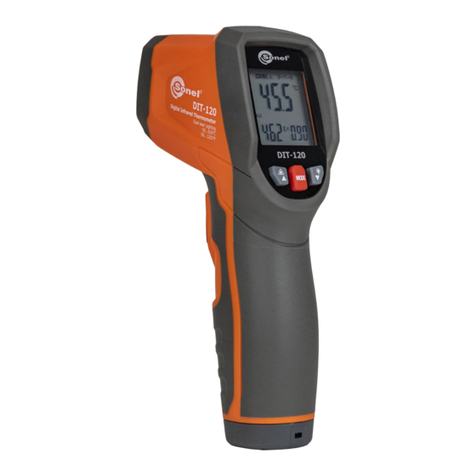
Sonel
Sonel DIT-120 User manual
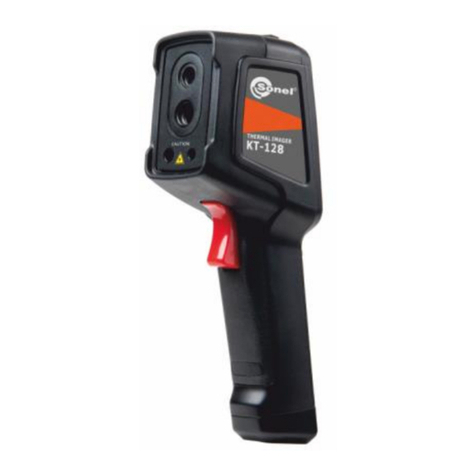
Sonel
Sonel KT-128 User manual
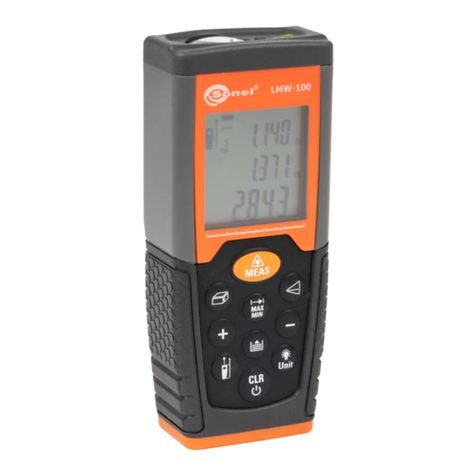
Sonel
Sonel LMW-100 User manual
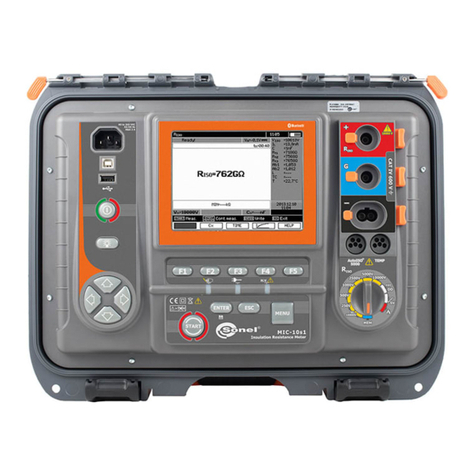
Sonel
Sonel MIC-10s1 User manual
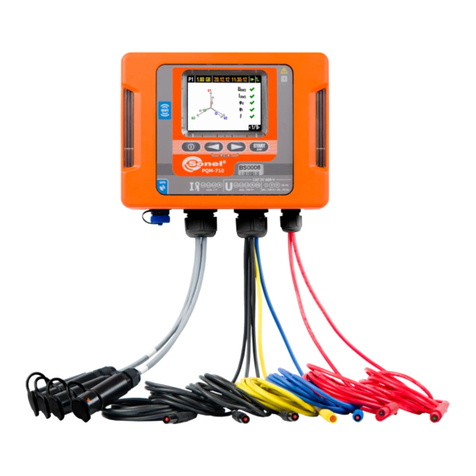
Sonel
Sonel PQM-702 User manual

Sonel
Sonel MIC-10 User manual

Sonel
Sonel TDR-420 User manual
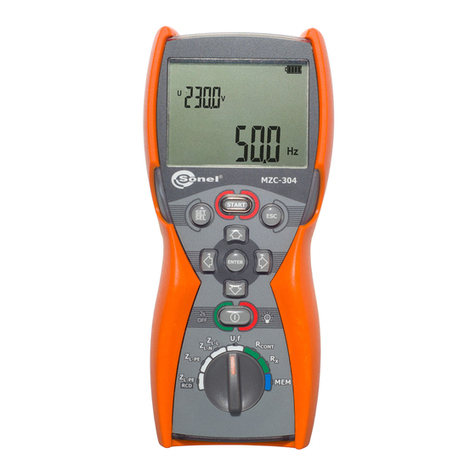
Sonel
Sonel MZC-304F User manual

Sonel
Sonel LMW-100 User manual
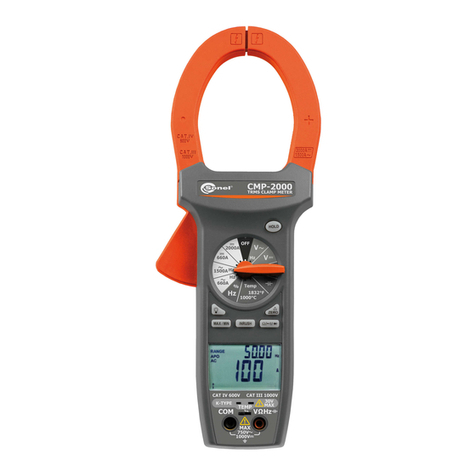
Sonel
Sonel CMP-2000 User manual
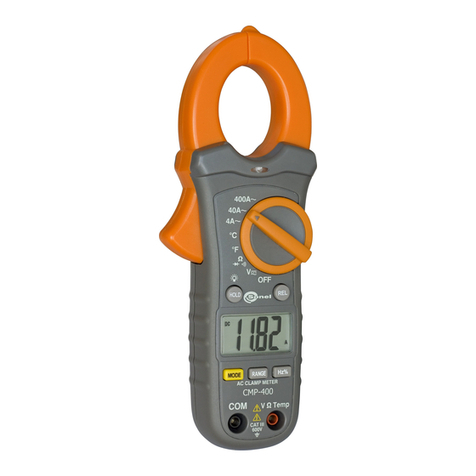
Sonel
Sonel CMP-400 User manual

Sonel
Sonel CMP-400 User manual

Sonel
Sonel PQM-702 User manual

Sonel
Sonel MRU-120HD User manual

Sonel
Sonel MIC-5010 User manual
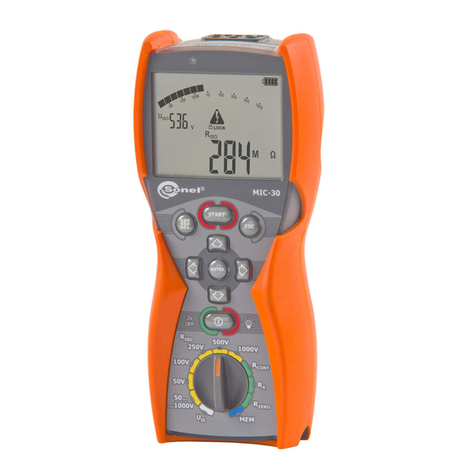
Sonel
Sonel MIC-30 User manual

Sonel
Sonel MRU-120 User manual

Sonel
Sonel MIC-10k1 User manual
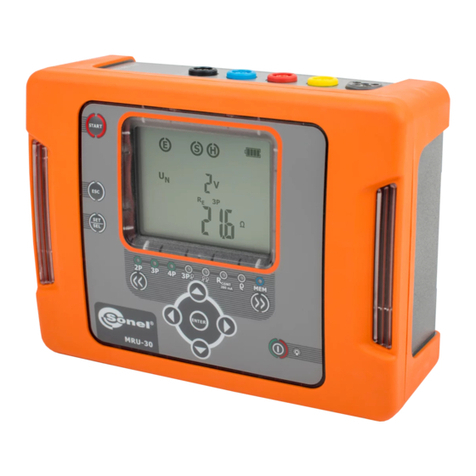
Sonel
Sonel MRU-30 User manual
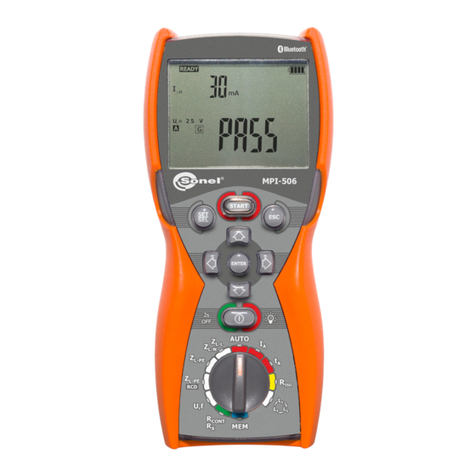
Sonel
Sonel MPI-506 User manual


